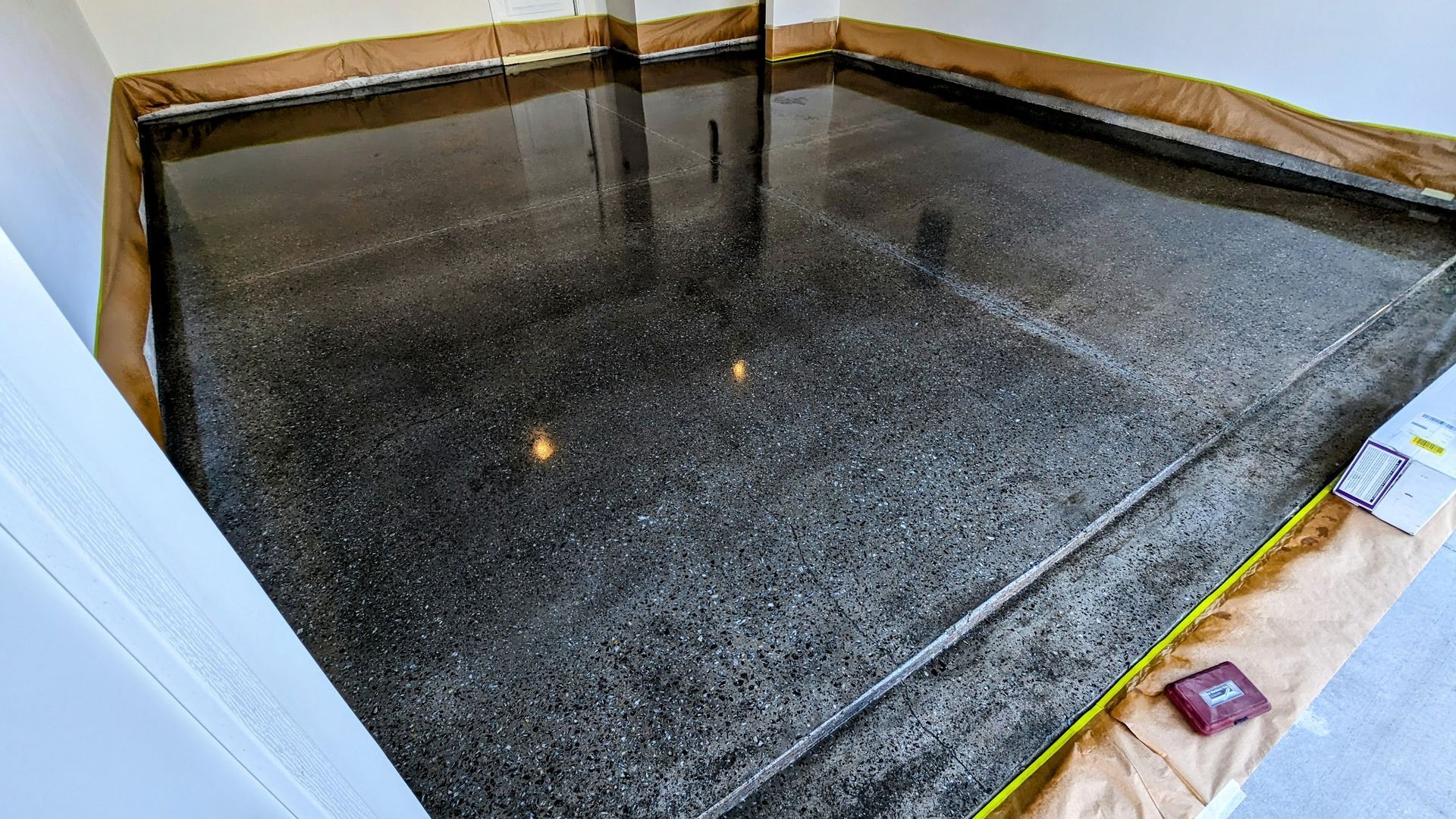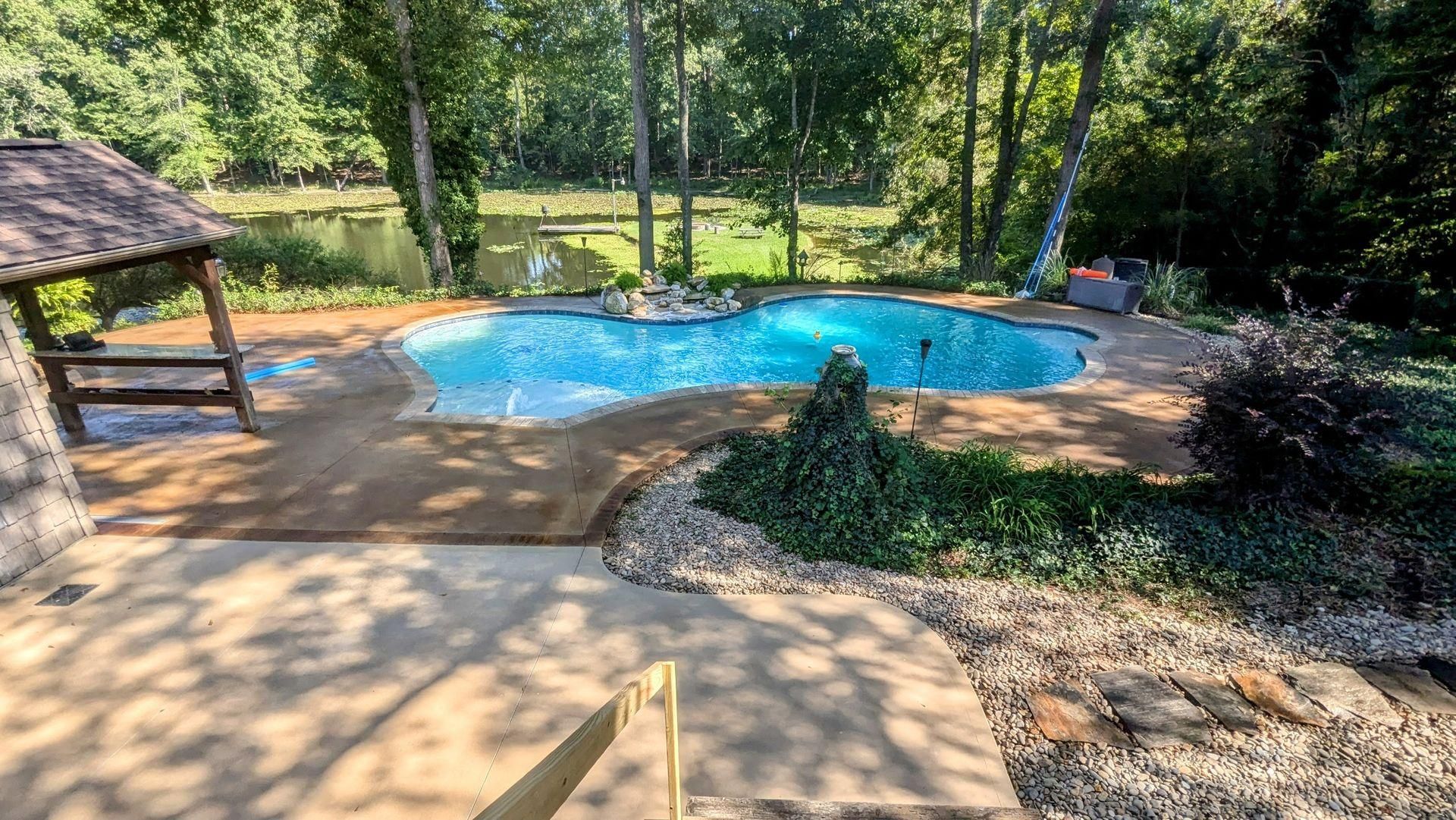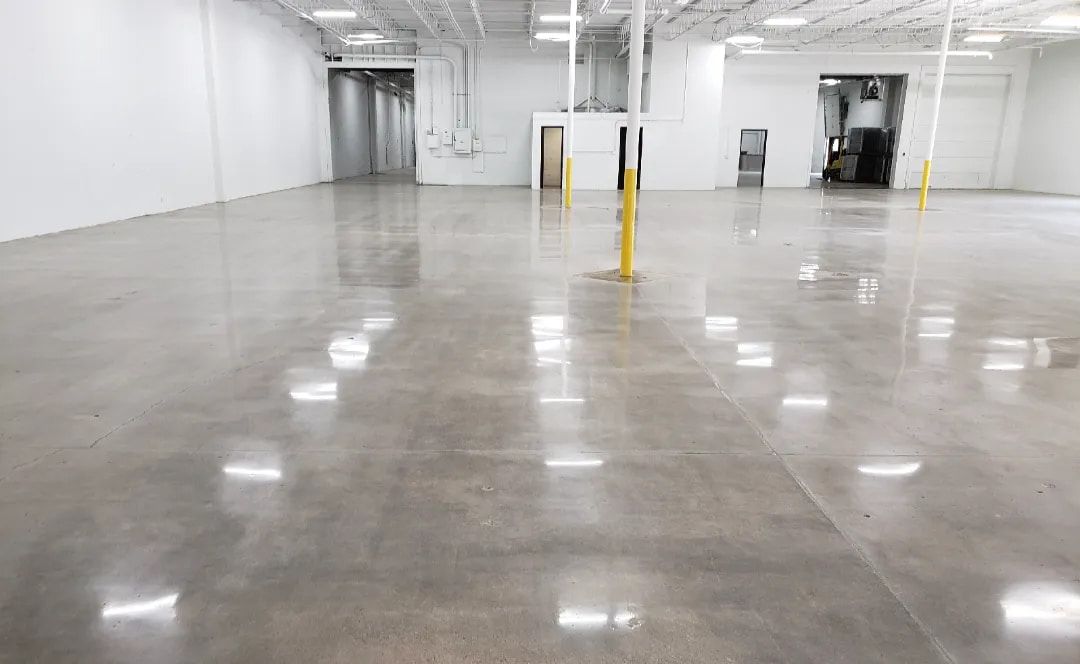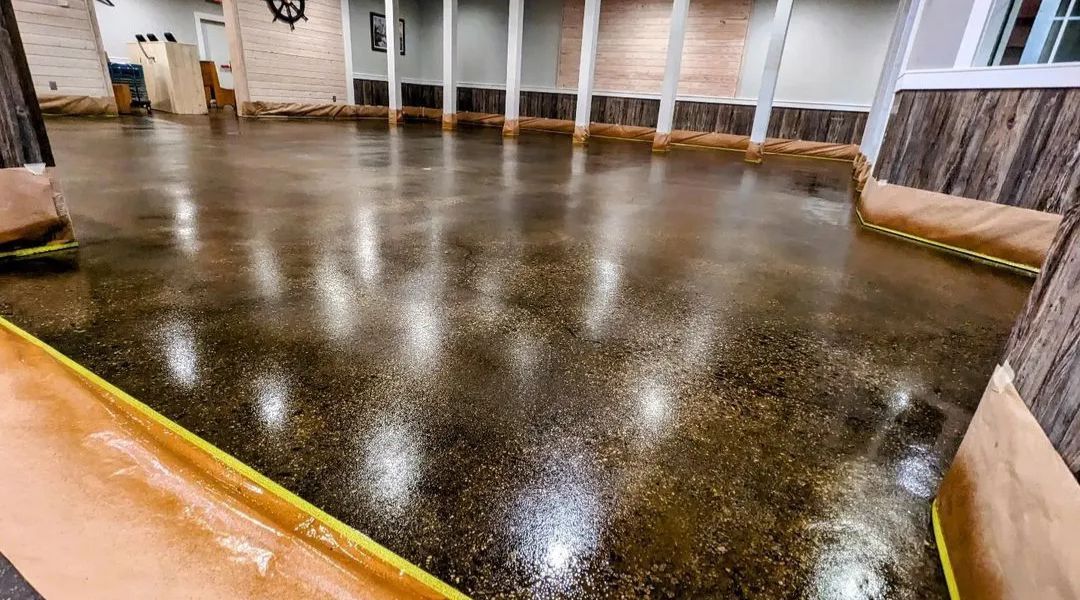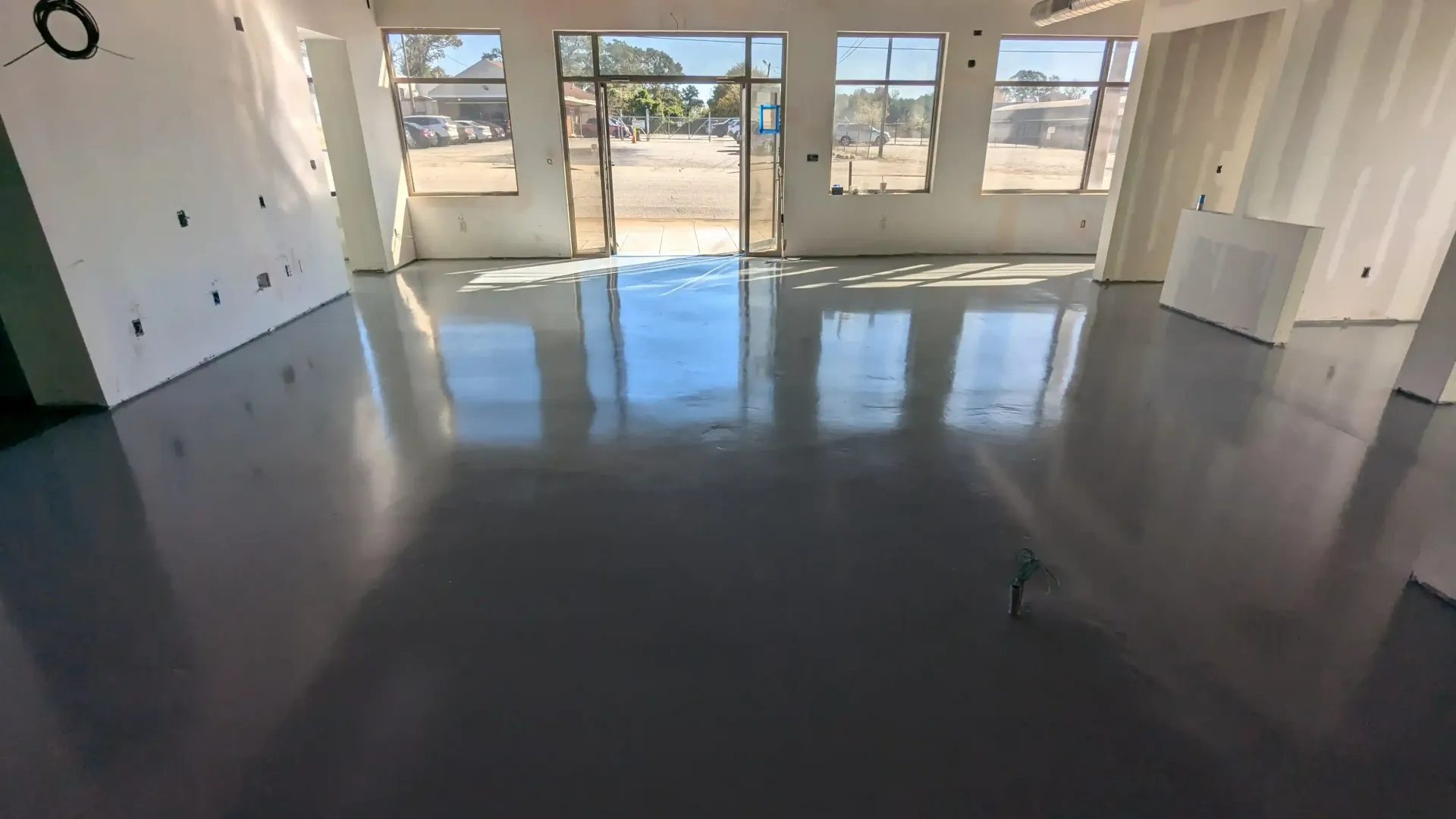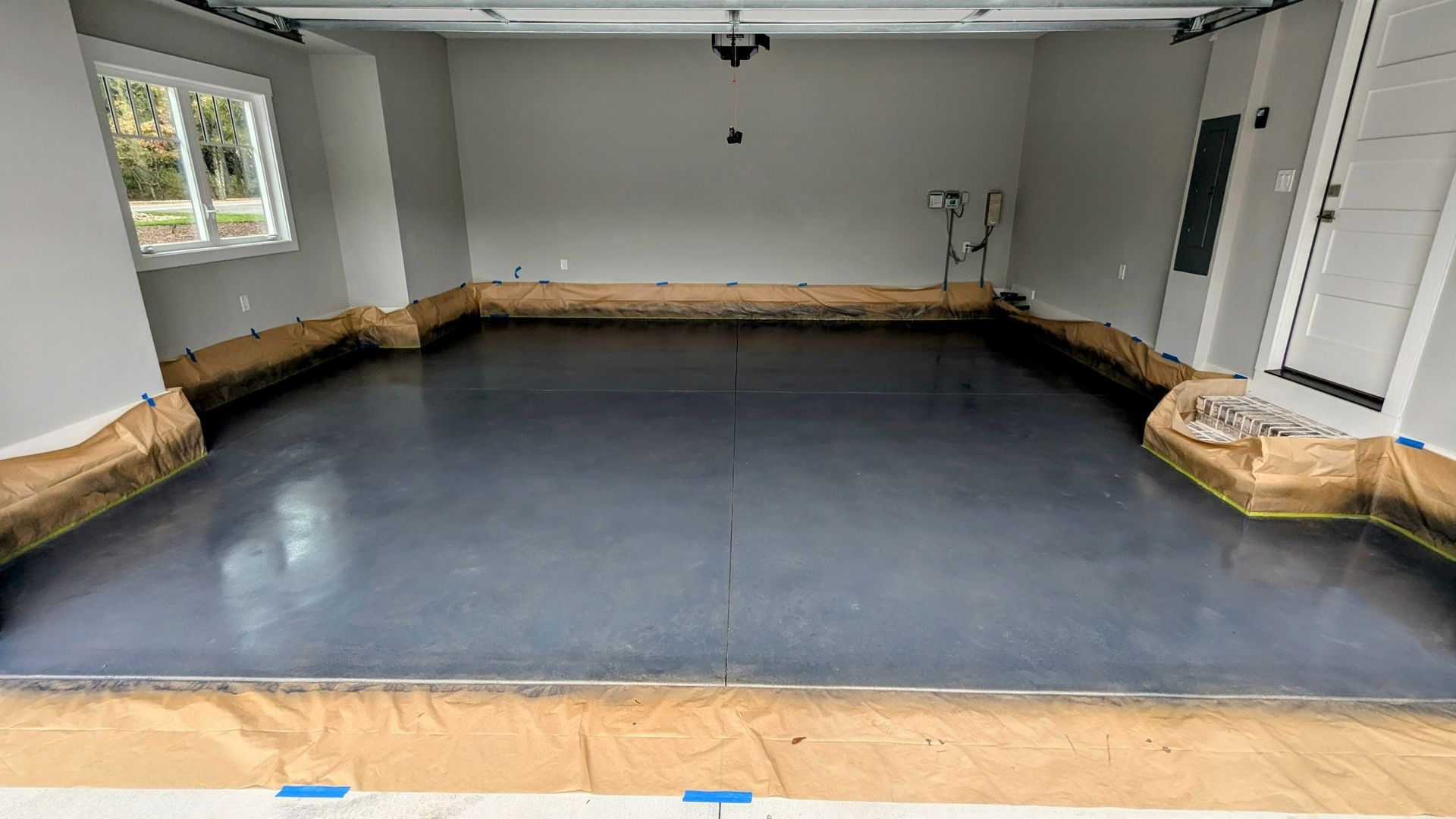Concrete Floor Restoration in Simpsonville That Pays Off
Concrete floors don’t stay flawless forever. Cracks, stains, and dull finishes creep in—especially in busy spaces like stores, offices, or garages. Over time, they stop looking professional and start feeling like a maintenance headache. If you’re in Simpsonville and wondering if concrete floor restoration is worth it, the short answer is yes—when it’s done right.
Old floors can drag down your space’s appearance and value. Worse, neglecting them often leads to costly repairs or replacements. The good news? Restoring your concrete floor doesn’t just fix the surface—it boosts safety, appeal, and longevity without breaking the bank.
This guide walks you through how professional restoration works, what to expect, and why it’s a smart investment for businesses and homeowners in Simpsonville.
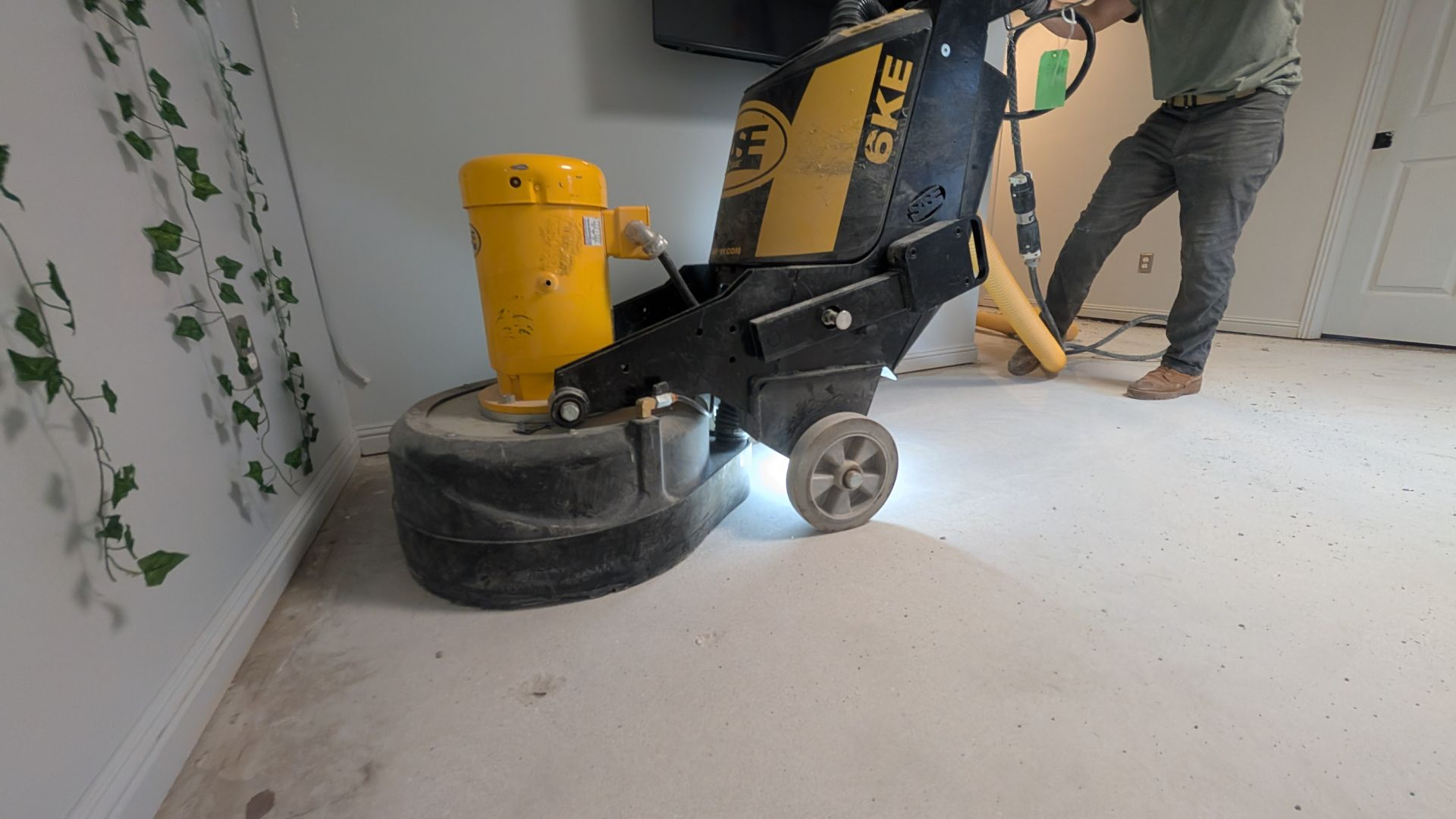
What Is Concrete Floor Restoration?
Concrete floor restoration is more than just cleaning. It’s a detailed process of repairing damage, grinding the surface smooth, and applying finishes that bring floors back to life. Think of it as a refresh that also strengthens your floors for the long haul.
The process may include:
- Crack repair and patching
- Surface grinding or honing
- Stain or coating removal
- Polishing or sealing for durability
The goal isn’t just to make it look better—it’s to make it last longer, too.
Why Floors in Simpsonville Take a Beating
Simpsonville’s mix of humid summers and cooler winters means moisture shifts, which stresses concrete. Add foot traffic, spills, chemicals, and wear from equipment or furniture, and your floors are constantly under pressure.
Without regular maintenance, here’s what can go wrong:
- Cracks start small but spread
- Surface stains from oils, spills, or salt become permanent
- Uneven textures cause tripping hazards
- Dull, dusty finishes make the space look neglected
If any of that sounds familiar, restoration might be overdue.
Common Signs Your Concrete Floor Needs Restoration
You don’t have to be a contractor or flooring expert to notice when your concrete floor is in trouble. The signs usually show up right under your feet—and if you catch them early, you can avoid bigger repair bills later. Here’s what to look for and what each issue could mean:
Discoloration or Staining
Stains from oil, rust, grease, or spilled chemicals don’t just look bad—they can soak into the surface and weaken the material underneath. In commercial settings like shops or garages, this is especially common. Discoloration might also point to moisture problems or leftover sealants that have worn away unevenly. Once the surface is compromised, it’s more prone to further damage.
Visible Cracks or Chips
Even small cracks can let water in, which leads to more cracking, freeze-thaw damage, and eventually full-on structural problems. Chips around corners or joints are often the first sign of wear from foot traffic or heavy equipment. If left unchecked, these flaws can grow and lead to trip hazards, exposed aggregate, or surface instability.
Uneven or Pitted Surface
Does your floor feel rough or look bumpy in places? That’s usually from pitting—small holes that develop from wear, moisture exposure, or chemical damage. Uneven surfaces may form from settling, bad curing, or repeated impact. These flaws not only collect dirt but make cleaning harder and reduce traction. In commercial environments, they can even create liability risks.
Dusting (A Chalky Residue That Never Goes Away)
If you sweep and still find a powdery mess a few hours later, your concrete is “dusting.” This happens when the top layer of the floor starts to break down, often due to poor finishing, old age, or high traffic. It’s more than an annoyance—it’s a sign your floor is degrading and needs professional grinding or sealing to prevent further breakdown.
Worn-Down Sheen or Polish
If your once-polished floor looks dull, cloudy, or scratched, the protective layer is gone. Over time, foot traffic, cleaning chemicals, and UV exposure wear away the finish. Without that surface protection, the concrete underneath is exposed to damage. Polished or sealed floors should reflect light and feel smooth. When they don’t, it’s time to restore the surface before it deteriorates further.
Why These Signs Matter
Each of these symptoms points to more than just surface-level problems. They’re early warnings that your concrete is no longer holding up the way it should. If ignored, small flaws often turn into big repairs that cost more and disrupt your business or home life longer. Acting early with professional restoration can stop the damage, restore the look, and give your concrete years of extra life.
The Process of Concrete Floor Restoration (Step-by-Step)
Concrete restoration can be done with minimal downtime when handled by pros. Here’s how a typical project goes:
- Assessment & Testing – The contractor checks for moisture issues, damage depth, and previous coatings.
- Surface Preparation – Grinding removes the top layer to even it out and open up the pores for treatment.
- Repairs & Patching – Cracks, chips, or spalls are filled with compatible materials.
- Finish Options – You can go with polishing, staining, sealing, or coating—depending on your style and traffic needs.
- Final Buffing or Curing – Finishing touches are added for strength, gloss, and longevity.
Each step ensures the concrete doesn’t just look better—it’s built to handle wear for years to come.
Restoration vs. Replacement: What’s the Smarter Move?
Replacing a concrete floor means ripping it out and pouring a new slab. It’s expensive, messy, and time-consuming. Restoration, on the other hand, uses what’s already there—saving materials, money, and time.
| Factor | Concrete Floor Restoration | Concrete Floor Replacement |
|---|---|---|
| Cost | 40–60% less expensive | High material and labor costs |
| Time | Usually completed in 2–3 days | Can take a week or more, plus curing time |
| Disruption | Minimal downtime, less mess | Noisy, dusty, and requires demo/removal of old slab |
| Durability | Can last another 10+ years with proper care | Long-lasting if done right, but not always necessary |
| Aesthetics | Modern finishes (polished, stained, sealed) for updated look | Basic new slab unless additional finishing is added |
| Eco-Friendliness | Reuses existing material, less waste | Requires more concrete and disposal of old slab |
| Best For | Cosmetic fixes, minor damage, dull or worn surfaces | Severely cracked, settled, or structurally failing slabs |
Unless your slab is beyond saving, restoration is the smarter move for most Simpsonville properties—it's faster, more affordable, and still delivers high-quality results.
Best Finish Options for High-Traffic Areas
If you’re restoring floors in a commercial space, shop, or warehouse, durability and looks both matter. Here are a few top options to consider:
- Polished Concrete – Sleek, stain-resistant, and low-maintenance. Great for retail stores and offices.
- Stained Concrete – Adds color and texture with a natural stone-like look.
- Epoxy Coating – Ideal for garages or industrial zones with heavy equipment.
- Sealed Concrete – Basic but effective, especially for homes or light commercial use.
The right finish depends on your daily traffic, cleaning routines, and overall vibe you want.
Conclusion
Concrete floor restoration is more than just a face-lift—it’s a practical upgrade that protects your investment, improves daily life, and increases property value. For Simpsonville businesses and homeowners alike, it’s one of those projects that looks good and makes financial sense.
If your floor is stained, cracked, or just looking tired, don’t wait until it gets worse. Get it restored by experts who know how to bring out the best in your concrete.
Zachary Daniel Concrete specializes in floor restoration that lasts. Their work combines quality craftsmanship with local experience—so your floors not only look better but hold up for the long run.
